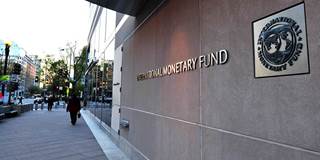Rather than count on the IMF to fulfill its mandate of protecting them from liquidity crises, emerging economies self-insure by accumulating large stockpiles of international reserves – resources that could be used to fund domestic needs. If member countries won't go to the Fund, the Fund should go to its member countries.
GENEVA – In the movie Dangerous Minds, the actress Michelle Pfeiffer plays a former US Marine who becomes a teacher in an inner-city high school. In a difficult environment, where academic achievement is far from the top of the rebellious teens’ list of priorities, Pfeiffer’s character comes up with an unorthodox – and effective – new approach: each student will start the year with an “A” grade, which is theirs to lose. At a time when many emerging-market economies are as discouraged as Pfeiffer’s students, perhaps the International Monetary Fund should take a page out of her playbook.

GENEVA – In the movie Dangerous Minds, the actress Michelle Pfeiffer plays a former US Marine who becomes a teacher in an inner-city high school. In a difficult environment, where academic achievement is far from the top of the rebellious teens’ list of priorities, Pfeiffer’s character comes up with an unorthodox – and effective – new approach: each student will start the year with an “A” grade, which is theirs to lose. At a time when many emerging-market economies are as discouraged as Pfeiffer’s students, perhaps the International Monetary Fund should take a page out of her playbook.